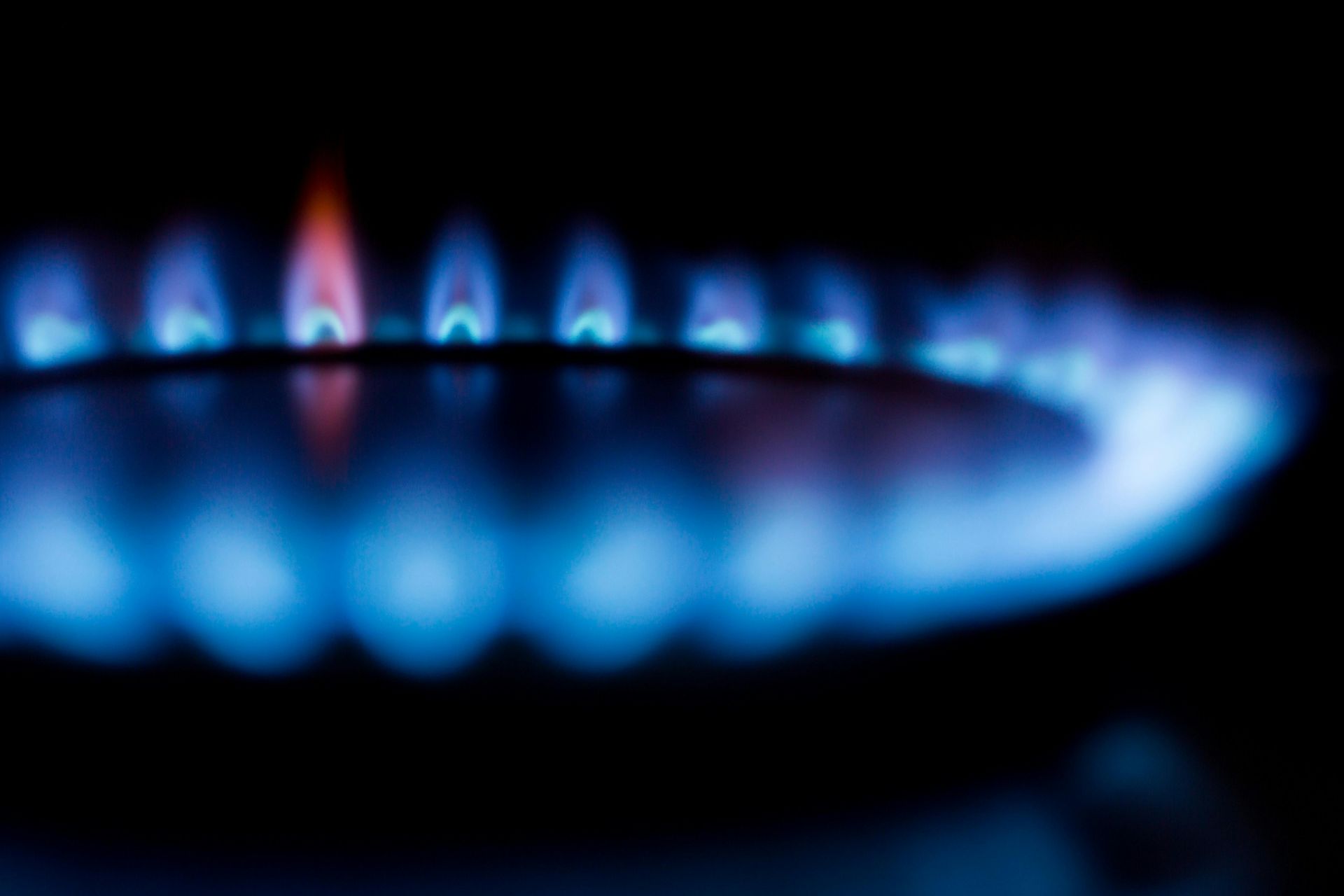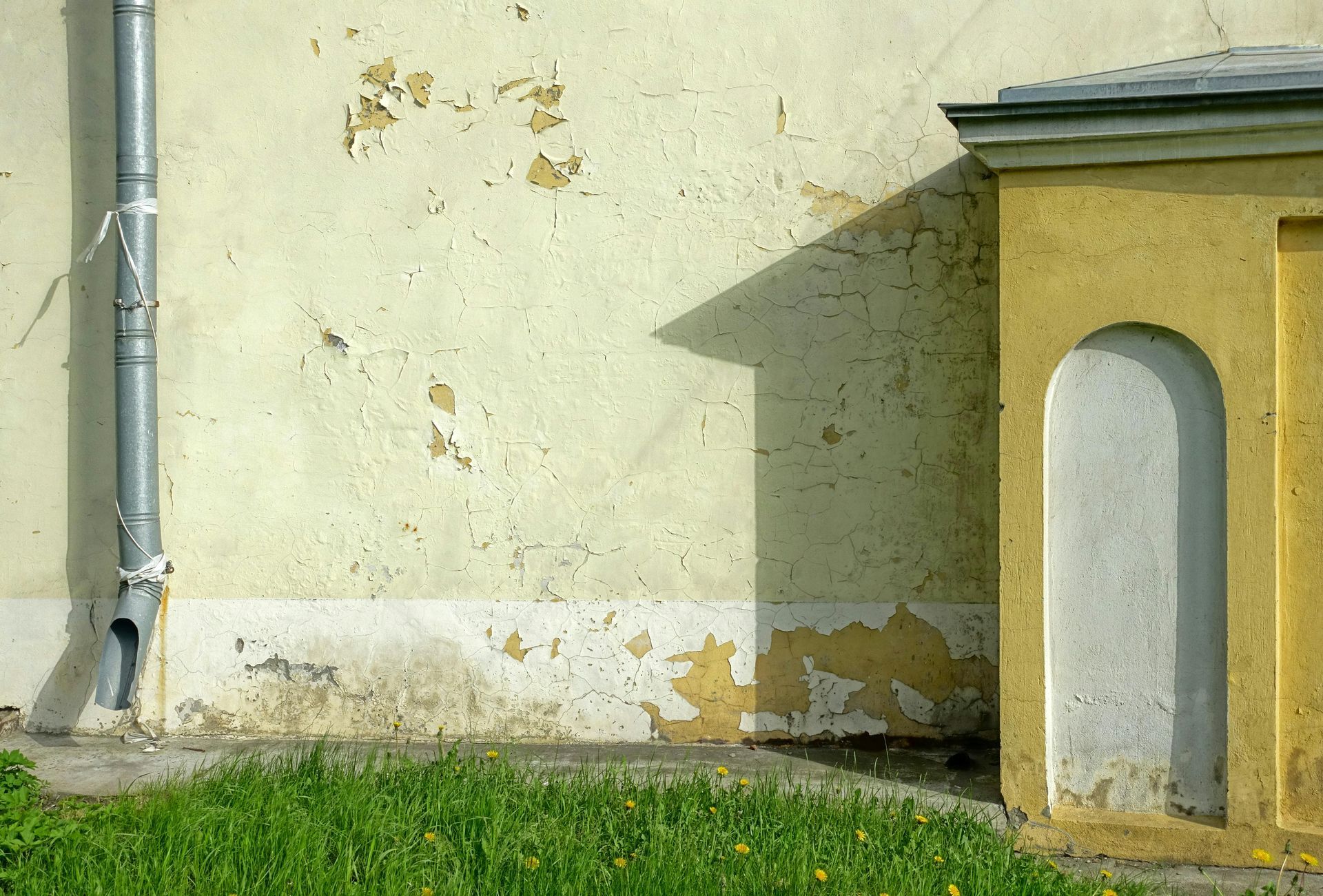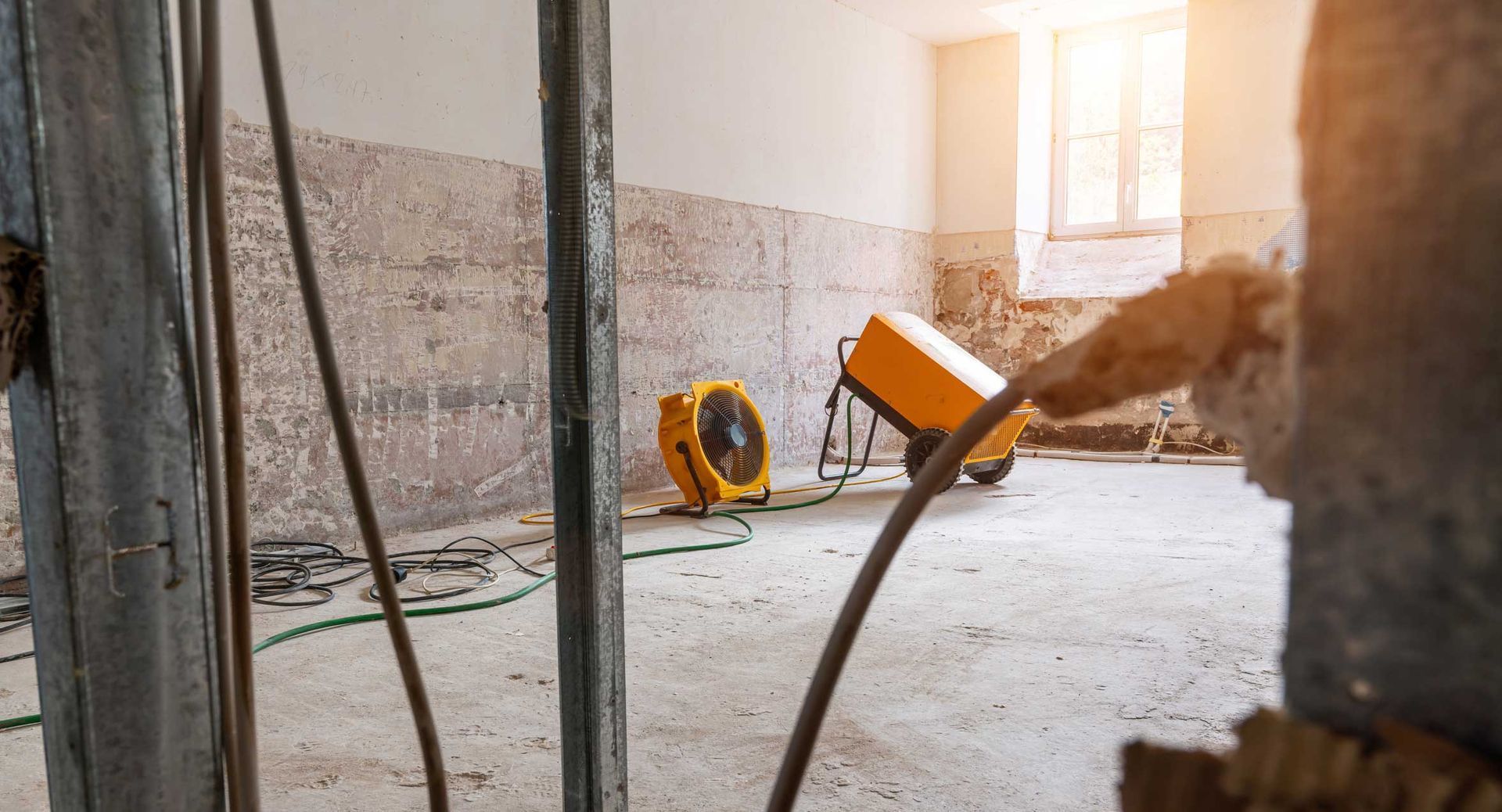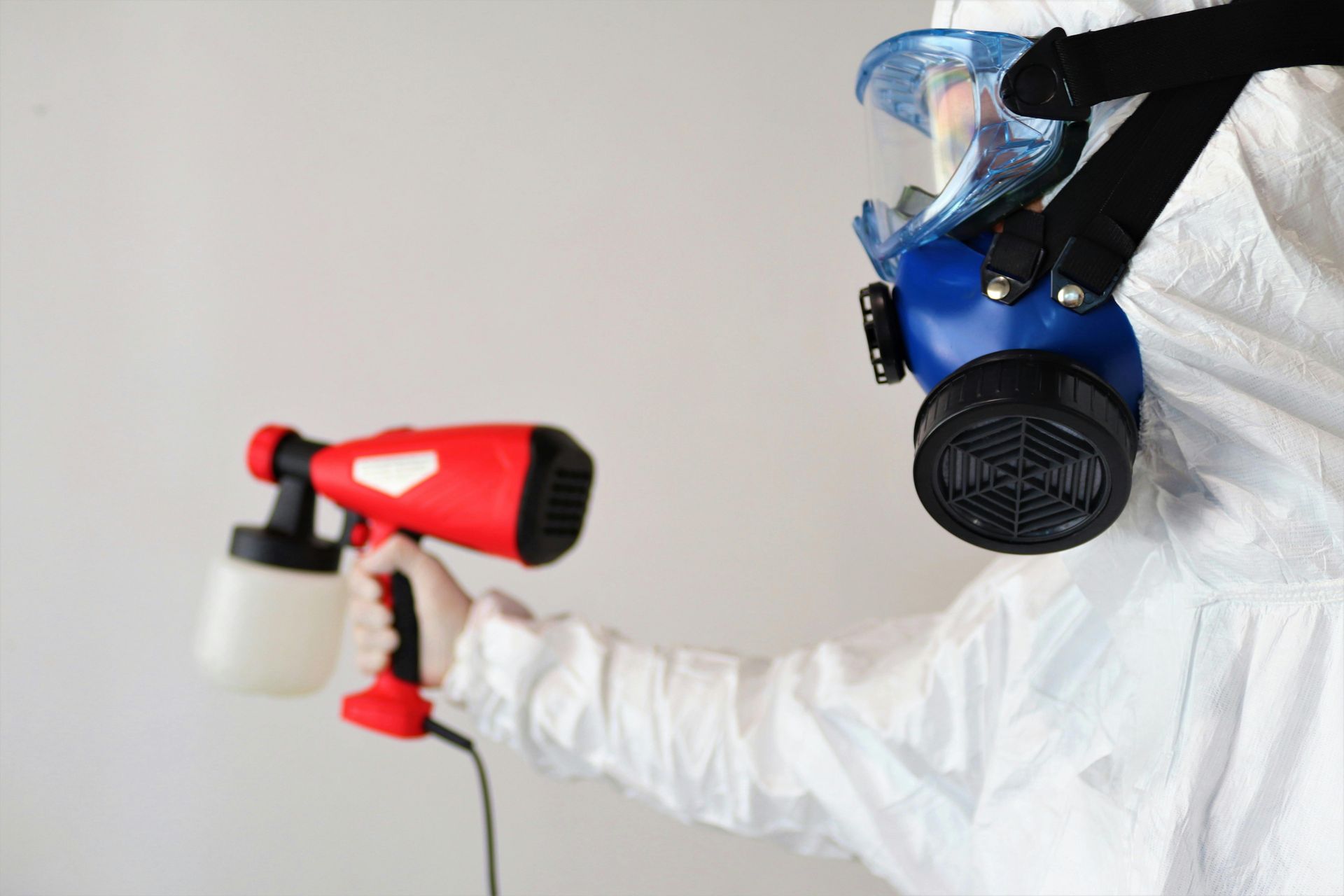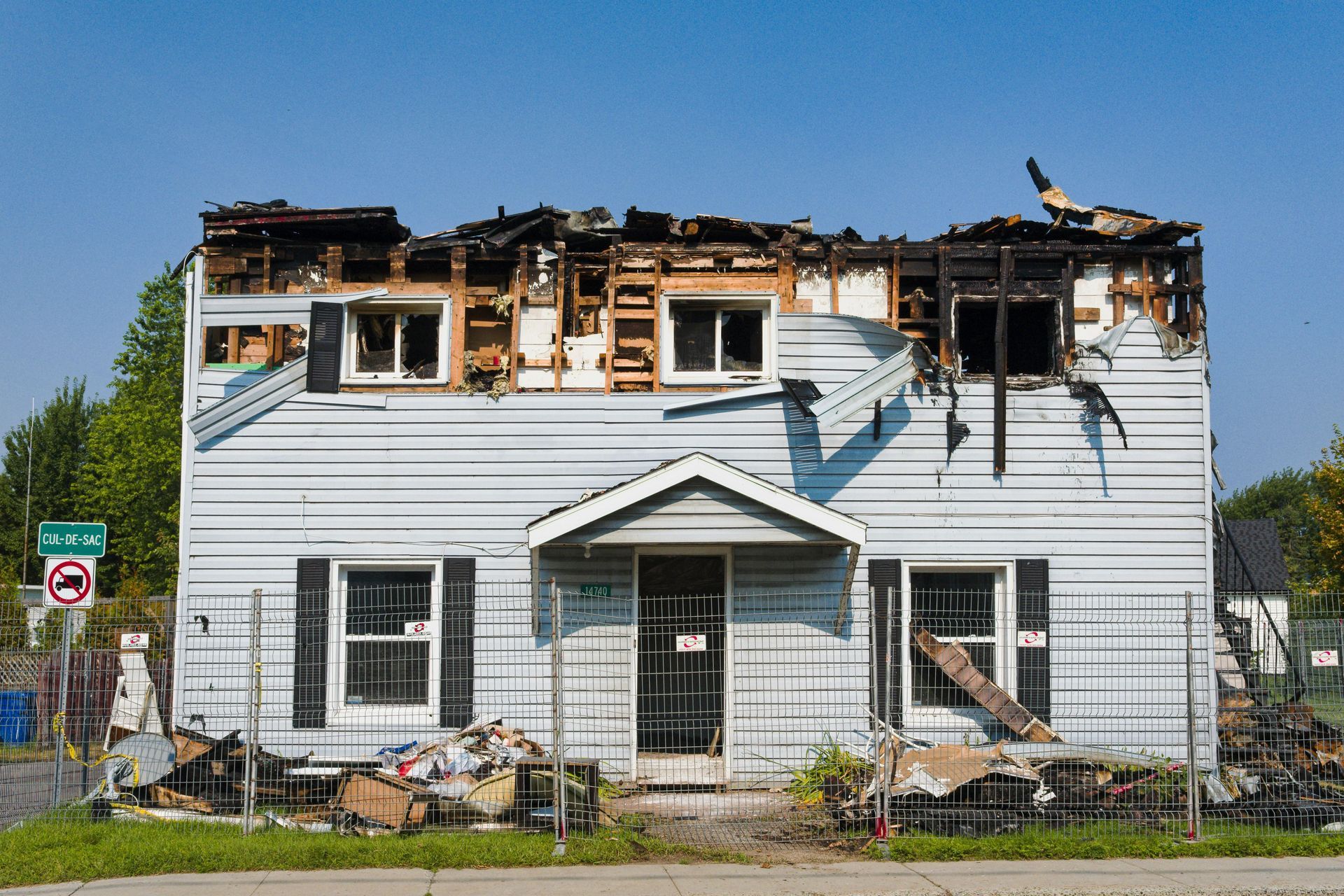The Importance of Quick Water Damage Response
Act Fast: Why Prompt Water Damage Clean-Up is Crucial for Your Home
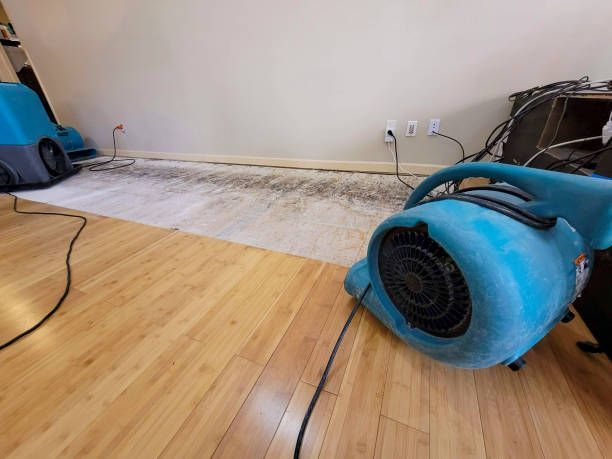
Water damage in a property can have significant, often detrimental effects if not promptly and appropriately addressed. The impact ranges from structural damage to the creation of unhealthy living conditions. Standing water can quickly become breeding grounds for mold, further complicating the clean-up and repair process. Immediate response in these situations is paramount to reducing damage and preventing secondary issues such as moisture damage. This article will delve further into the challenges of
flood clean-up and repair, the processes involved in water damage restoration, and why fast action is crucial to mitigate potential damages.
Causes of Water Damage
Water damage can stem from a variety of sources:
- Leaking or burst pipes: Over time, pipes can corrode, leading to leaks or even bursts that can cause significant water damage.
- Malfunctioning household appliances: Appliances like washing machines, dishwashers, and water heaters can break down and cause water leaks that can escalate into serious water damage if not addressed promptly.
- Plumbing issues: Problems such as clogged drains or a backed-up sewer can lead to water overflow, resulting in damage.
- Severe weather events: Incidents like flooding, heavy rain, and snowmelt can lead to water infiltration and damage.
- Roof leaks or damage: Aging or damaged roofs can allow water to seep into homes, causing damage to ceilings, walls, and belongings.
- Foundation cracks or damage: Water can seep through cracks in the house's foundation and cause structural damage.
- Overflowing toilets or bathtubs: These can result in extensive water damage, especially if the overflow happens on an upper level of the building.
- Natural disasters: Events like hurricanes, earthquakes, and tsunamis can all lead to water damage, sometimes on a catastrophic scale.
- HVAC issues: Leaks in your air conditioning unit or buildup of condensation can result in water damage.
- Human error: Mistakes like leaving a sink running or accidentally hitting a pipe can cause water damage.
Understanding these common causes can help in the prompt detection and minimization of water damage.
Long-Term Effects of Water Damage
If left unaddressed, water damage can lead to secondary issues such as mold growth, structural decay, and electrical hazards. These complications not only escalate repair costs but also depreciate the property's value. For instance, standing water becomes a breeding ground for mold, necessitating extensive moisture damage restoration. Addressing water damage promptly is, therefore, critical to avoid costly flood repair and protect your investment.
Mold Growth
Mold growth poses significant health risks. Exposure to mold spores can cause allergic reactions, manifested as sneezing, red eyes, and skin rashes. It also exacerbates respiratory conditions like asthma and can lead to coughing, wheezing, and difficulty breathing in sensitive individuals. Prolonged exposure can lead to severe health issues, including respiratory infections, lung inflammation, and, in extreme cases, toxic mold syndrome. The presence of mold in a home can create an unhealthy living environment, which is why comprehensive water damage restoration is paramount after any water damage incident.
Structural Damage
Structural damage is a significant consequence of unattended water damage. Moisture can weaken structural materials such as drywall, wood, and concrete, leading to deterioration over time. Walls may become swollen and discolored, while ceilings may start to sag under the weight of trapped water. Floors, especially those made of wood, are prone to warping and rotting, posing a potential risk of collapse in severe cases. Moreover, water can cause foundational damage, destabilizing the structural integrity of the building. Therefore, immediate water damage repair is crucial to avert these long-term damages and maintain the safety of your property.
Electrical Issues
Electrical systems can be severely compromised by water damage, posing potential fire hazards and risk of electrocution. Moisture can corrode electrical wires and disrupt power supply, leading to frequent power outages. Furthermore, water-damaged outlets or switches may become unpredictable and dangerous, increasing the risk of electrical shock. Wet electrical panels can cause circuit breakers to fail, leaving appliances without surge protection. In severe cases, standing water in areas housing electrical appliances or wiring can lead to electrical fires. Hence, prompt water damage clean-up is essential to prevent these serious electrical issues, ensuring the safety and functionality of your property's electrical systems.
Health Risks
Prolonged exposure to water damage and associated mold growth poses serious health risks. Mold spores, when inhaled, can initiate allergic reactions, trigger asthma attacks, and worsen pre-existing respiratory conditions. High levels of indoor dampness can contribute to upper respiratory tract symptoms, coughing, and wheezing in healthy individuals and can potentially lead to chronic respiratory illness in children. These issues, combined with the potential for toxic mold syndrome in severe cases, underline the importance of prompt water damage clean-up. A swift and effective
water damage restoration process is therefore imperative to maintain a healthy living or working environment.
Decrease in Property Value
Water damage can significantly depreciate property value. Potential buyers or tenants may be deterred by the history of water damage, as it suggests potential ongoing issues and costly future repairs. Additionally, insurance companies may increase premiums or even refuse to insure properties with a history of water damage. Furthermore, significant repairs, such as mold remediation, structural repairs, or flood clean-up, can be costly. For example, flood repair alone can range from $1,200 to $4,500, while mold remediation ranges from $500 to $6,000. These financial burdens, coupled with the potential decrease in property value, highlight the economic impact of water damage.
Increased Risk of Future Water Damage
Water damage can escalate the risk of future water damage by weakening the structural integrity of a property. For instance, drywall exposed to water can become soft and brittle, making it more susceptible to future water infiltration. Similarly, water-damaged wood can rot and lose its structural strength, making it more vulnerable to additional water exposure. Concrete compromised by water damage may also become more porous, allowing water to penetrate more easily in the future. Therefore, proper and prompt water damage repair is crucial to prevent the recurrence of water damage, preserving the durability and longevity of your property.
Unpleasant Odors and Reduced Indoor Air Quality
Water damage often results in unpleasant odors, primarily due to mold, mildew, and bacteria that flourish in damp environments. Moisture-laden air, resulting from unattended water damage, can significantly reduce indoor air quality, making the environment uncomfortable and unhealthy. Prolonged exposure to such conditions can exacerbate respiratory issues, trigger allergies, and negatively impact overall well-being. Thus, timely flood clean-up and water damage restoration are critical to prevent these issues and ensure the health and comfort of inhabitants.
Pest Infestations
Water damage can inadvertently create breeding grounds for pests, contributing to infestations. Standing water and damp environments attract a variety of pests, including mosquitoes, ants, cockroaches, and rodents. These pests are particularly drawn to moist areas as they provide ideal conditions for them to thrive and reproduce. Mosquitoes, for instance, lay their eggs in standing water, while cockroaches and rodents are attracted to damp, rotting material. Thus, effective moisture damage restoration processes are instrumental in preventing such pest infestations and maintaining a healthy living environment.
Discoloration and Staining
Water damage can lead to visible discoloration and staining on walls, ceilings, and floors, negatively impacting the aesthetic appeal of a building. Absorbed water may cause patches of discoloration, ranging from faint yellow hues to dark brown stains. This is particularly noticeable on walls and ceilings, where moisture accumulates and is unable to evaporate quickly. Additionally, water can also cause staining on floors, especially on wooden and carpeted surfaces. These stains can be stubborn and difficult to remove, requiring professional cleaning or even replacement of the affected surfaces. Beyond just an unpleasant sight, these signs of discoloration and staining can also indicate the extent of water damage and hint at potential underlying structural issues. Hence, upon noticing these signs, it's crucial to initiate a thorough flood clean-up and water damage restoration process to prevent further damage and maintain the aesthetic integrity of your property.
Inefficient Energy Usage
Water damage can greatly impact the efficiency of HVAC systems in a building. When these systems are exposed to water, their components may corrode, leading to a decrease in performance and an increase in energy usage. This inefficient energy usage can result in higher energy bills. For instance, a water-damaged air conditioner may need to work harder to maintain the same level of cooling, using more energy and increasing costs. Similarly, a water-damaged furnace may consume more fuel to provide the same level of heat. Hence, timely water damage repair is essential to maintain the efficiency of HVAC systems and keep energy costs in check.
The Importance of an Immediate Response
Responding quickly to water damage is crucial to mitigate further damage. This includes immediate actions such as stopping the source of the water and
removing any standing water. The first 24-48 hours following water damage are particularly critical in preventing mold growth, as this is the timeframe in which mold can start to develop in a damp environment.
Wet vacuums or submersible pumps are effective tools for removing standing water. These tools suck up water and pump it to a designated drainage area.
Dehumidifiers and fans can also be used to speed up the drying process and help reduce the humidity levels in the water-damaged area, therefore inhibiting mold growth.
In cases of severe water damage, specialized equipment like air movers, moisture meters, and
thermal imaging cameras might be used to locate areas of moisture and monitor the drying process. However, due to the potential risks and complexities associated with handling water damage clean-up and water damage repair, professional water damage restoration services are often necessary. These services have the expertise and advanced equipment necessary to perform flood clean-up and flood repair effectively, ensuring moisture damage restoration is done thoroughly to avoid any potential long-term effects.
Working with Water Damage Professionals
Working with water damage professionals comes with several benefits:
- Expertise: These specialists are equipped with the knowledge and skills to handle water damage clean up and repair, ensuring comprehensive moisture damage restoration.
- Advanced Equipment: Professionals use high-tech tools for effective water extraction, speedy drying, and accurate moisture detection, which are crucial in preventing further damage and potential mold growth.
- Mold Remediation: Professionals also tackle mold issues that may arise due to water damage, ensuring your interior environment is safe and healthy.
- Structural Repair: Besides cleaning up, they provide structural repair services to restore your property to its former state.
When looking for a water damage professional:
- Ensure the provider is licensed and insured.
- Look for professionals with positive reviews and testimonials.
- Find a service provider who offers 24/7 emergency response, as swift action is crucial in water damage situations.
By choosing a reputable company like North Eastern Restoration, you can ensure effective flood clean-up, flood repair, and overall water damage restoration.
Act Fast – Get In Touch Now!
At
North Eastern Restoration, our priority is restoring your property to its original state or even better. Our team of professionals is equipped with cutting-edge tools and unrivaled expertise in water damage clean-up, repair, and restoration. We understand the urgency, so we are available 24/7 to mitigate the damage and prevent any potential mold growth and future damage. Don't turn standing water into breeding grounds for problems. Choose North Eastern Restoration for swift and comprehensive flood clean-up, flood repair, and moisture damage restoration. Every second counts. Call us today!
